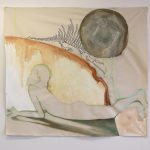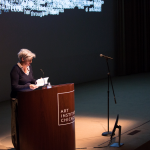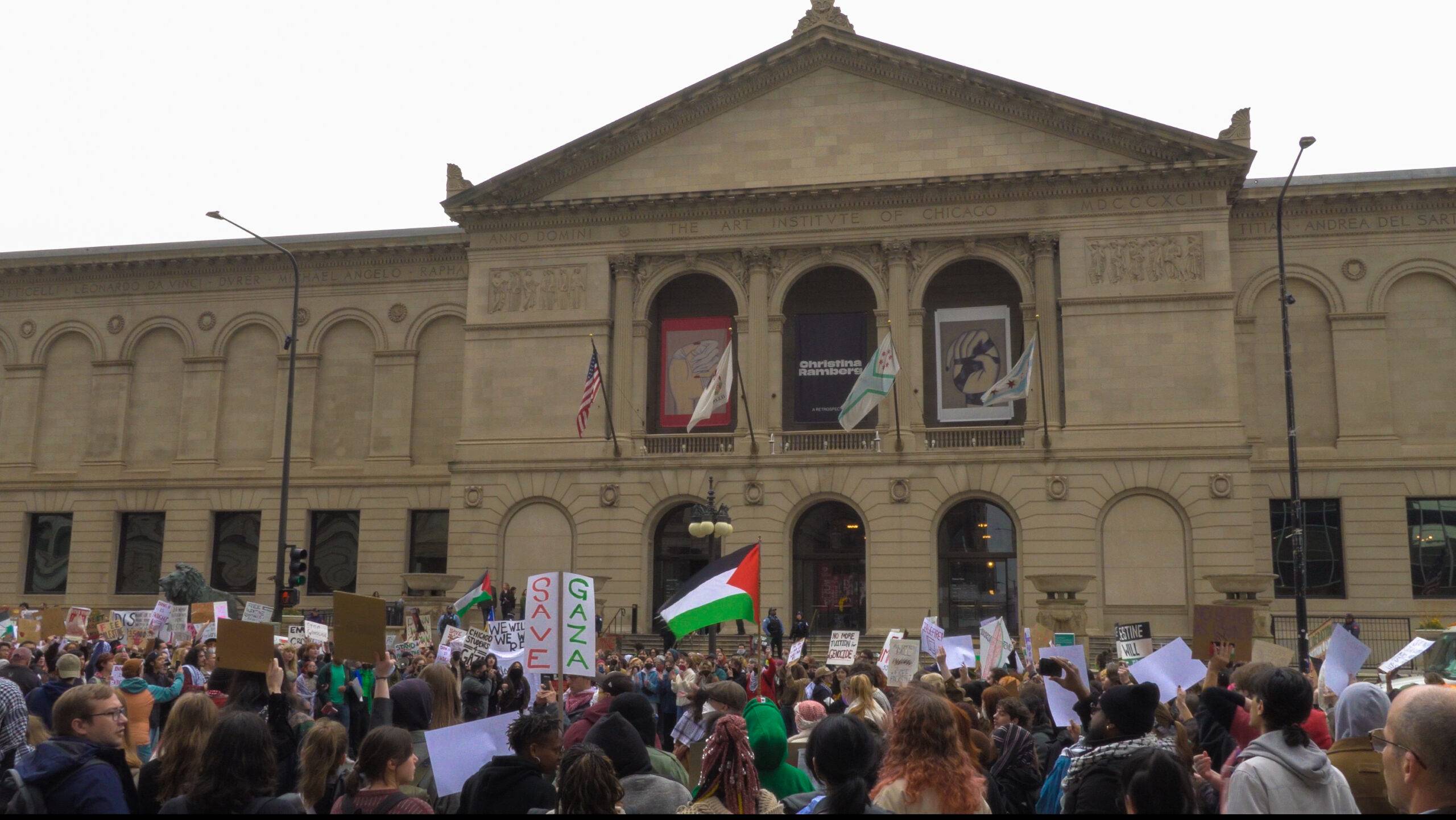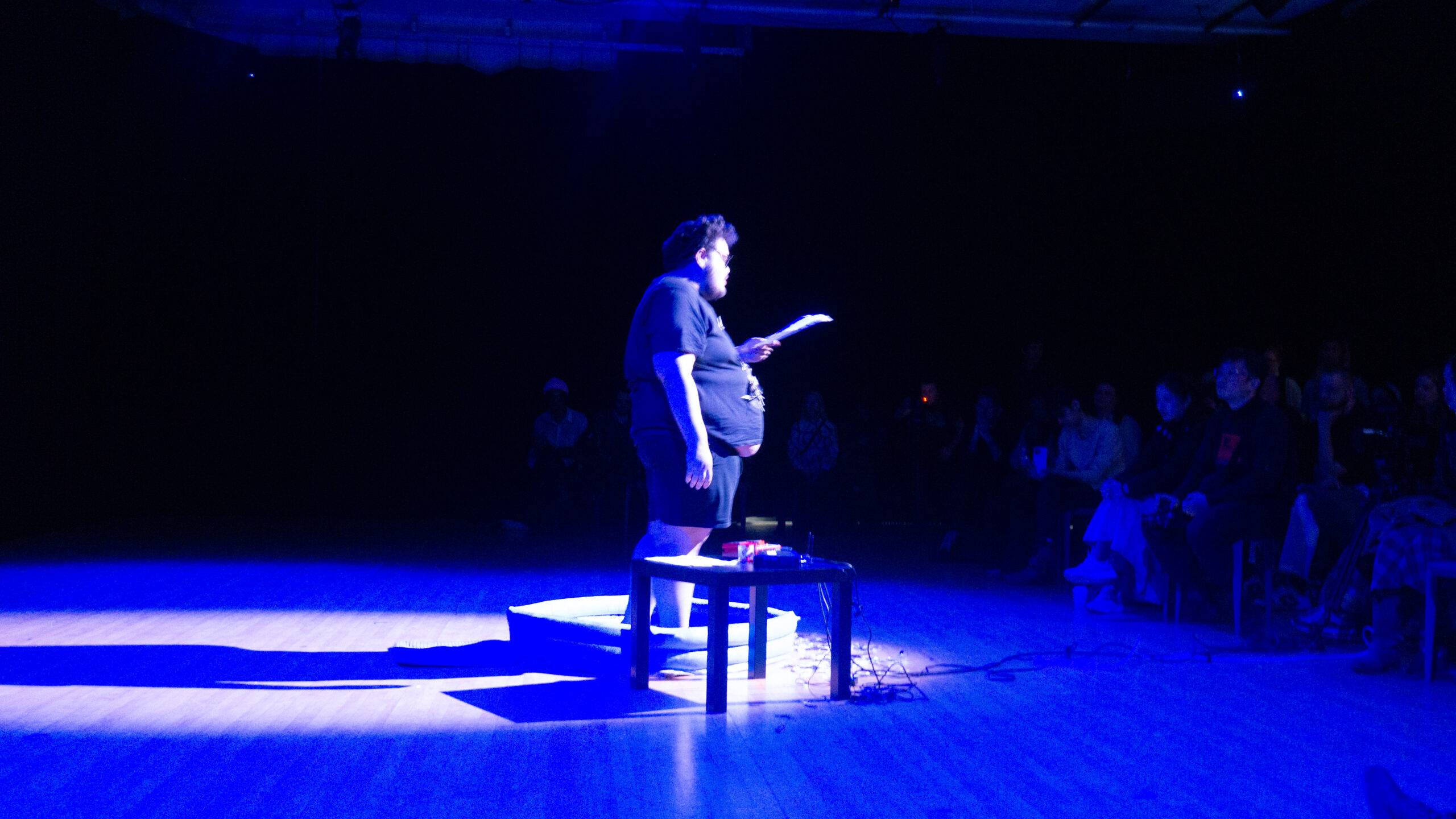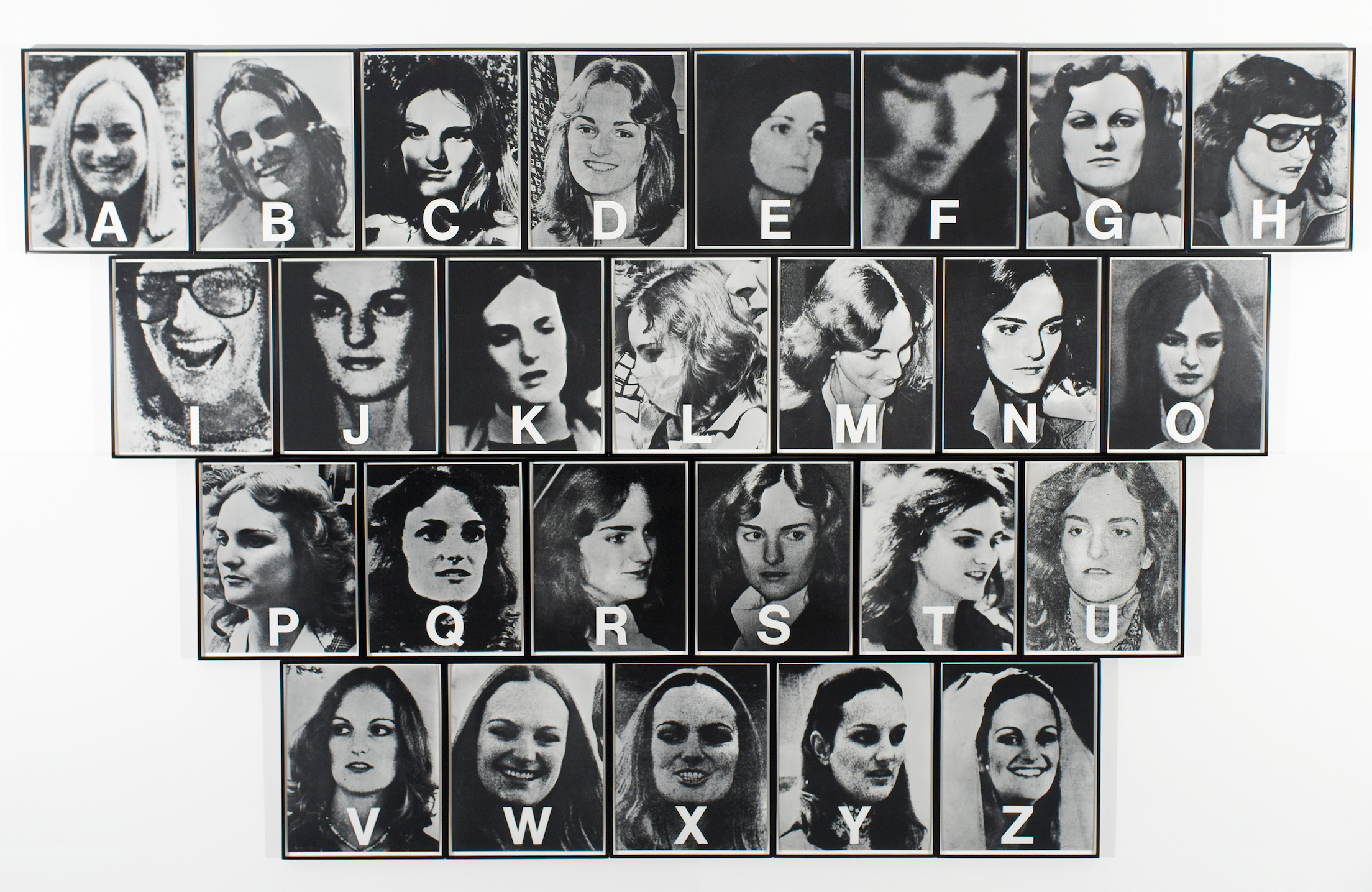
Dennis Adams, “Patricia Hearst – A thru Z,” 1979/90. Courtesy of the Museum of Contemporary Art Chicago.
In September 1970, LIFE magazine featured a story titled “The Making of a Fugitive” that profiled the political activist Angela Davis, who at that time had fled from the state of California. A month before the story ran, a heavily-armed 17-year-old African American student named Jonathan P. Jackson took a courtroom in Marin County, California hostage.
As Jackson was ushering several hostages and two convicts into a car, the police began shooting at the vehicle. In all the gunfire that ensued, a judge, a juror, and the convicts — who were among the hostages Jackson took — were killed.
In the state of California, all persons directly or indirectly involved in “the commission of crime” are liable to arrest. Angela Davis’ name was linked to the purchase of the firearms used in the attack, as Jackson has previously worked as her bodyguard. Using this to make a case, an arrest warrant was issued and Davis became the third ever woman to appear on the FBI’s Ten Most Wanted Fugitives list.
Inspired by the story in LIFE, the Museum of Contemporary Art Chicago’s (MCA’s) “The Making of a Fugitive” questions what it takes to “create” an outlaw.
Using the museum’s permanent collection and her personal interest in criminality and identity politics, curator Faye Gleisser has brought together works of various artists who examine different definitions of “fugitive” and investigate the role society plays in nurturing crime.
A multi-layered answer to the question presented by the exhibition title is revealed to the viewer. While staring at Carrie Schneider’s photograph of Abigail DeVille reading Angela Davis’ autobiography, I wondered if the show was going to look at the things that drive someone to become a fugitive. Holding on to this thought, I continued over to a display of a crumbling copy of LIFE Magazine, dated September 1970, with Angela Davis on the cover and suddenly the title of the show began to turn cogs in my head.
Both the cover story and exhibition build up an image of a how a person’s life and their choices can be shifted around, like furniture in the living room, to create an outlaw and uncomfortable space for both you and this “fugitive.” The job of magazines and newspapers is to report, not create — but is that always the case?
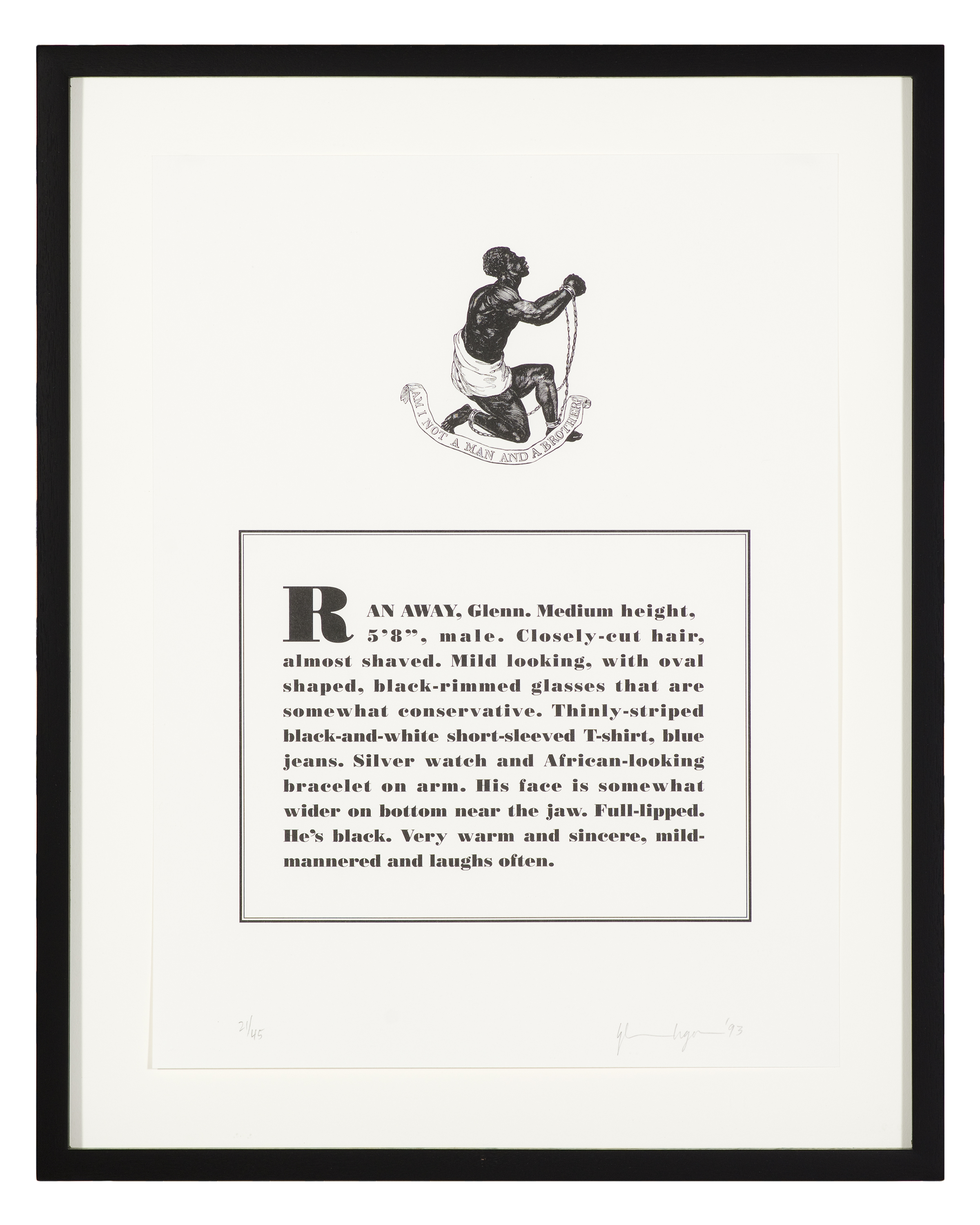
Glenn Ligon, “Runaways,” 1993. Courtesy of the Museum of Contemporary Art Chicago.
Glenn Ligon’s “Runaways” lithograph series, fashioned after posters that were used to track slaves who escaped under the Fugitive Slave Act of 1850, urges you to look closely at police charge sheets and specific words used to describe crimes and the people accused of committing them. Lignon uses design elements from these posters and text from a personal project where he asked ten friends to describe him as if for a missing person’s report. The end result is that each “report” is sprinkled with the writer’s personal misgivings and racial stereotypes.
While examining R.B. Kitaj’s screen print titled “The Wording of Police Charges” a chill may run down your spine as you begin to puzzle over what it means if the justice system that exist to protect is fundamentally flawed. At this point you may also begin to think about how you view and describe a “criminal” in society.
Xaviera Simmons’ photograph of a torn-out magazine page against a seascape is reminiscent of cheesy travel blogs posting trendy holiday photos; however, you will be startled by how distorted things begin to look when you peer closely at where the torn-out magazine cut-out ends and the seascape begins in “On Sculpture #2.” I found myself suddenly re-assessing every story I had ever read — their image choices, their layouts — and searching for their ulterior motives.
Bruce Nauman’s neon piece “Run from Fear, Fun from Rear” was another show standout. Over the phone, Glessier discussed with me the use of humor to critically examine insecurity and fear in society. The yellow and red neon lights used by Nauman are bent to draw attention to the way meaning changes when words, just like images, are re-ordered. The power to present first-hand information in a new light can be used to either build the image of a person or shred it to bits. In the absence of her narrative, a new one was created for Angela Davis. Gleisser emphasized the need for media literacy and for re-examining the lens through which we view crime and their perpetrators.
The exhibit concludes with a new age joke on surveillance. “Spy Kit” by Chris Burden and “Escape Survival Manual” by Huong Ngo both depict the futility of spying on other people and calling them out to protect yourself. These pieces draw attention to the false sense of security created by setting up surveillance on specific groups. Instead of peering closely at the justice system which presents a distorted view of crime and the media that feeds these fears, readers find themselves convinced of dangers that in all likelihood don’t exist and are better resolved with empathy.
Personifying Angela Davis’ story from LIFE and using art pieces from different contexts, “The Making of a Fugitive” is a mental exercise in questioning everything, in being cautious of what you read and how you read it, and figuring out what you should do with information you are presented.
Two years after the story was published, Davis was acquitted. Her relationship to the guns was ruled to be insufficient evidence to accuse her of involvement in the crime committed by Jackson.
“The Making of a Fugitive” is on display at the Museum of Contemporary Art Chicago until December 4, 2016.

